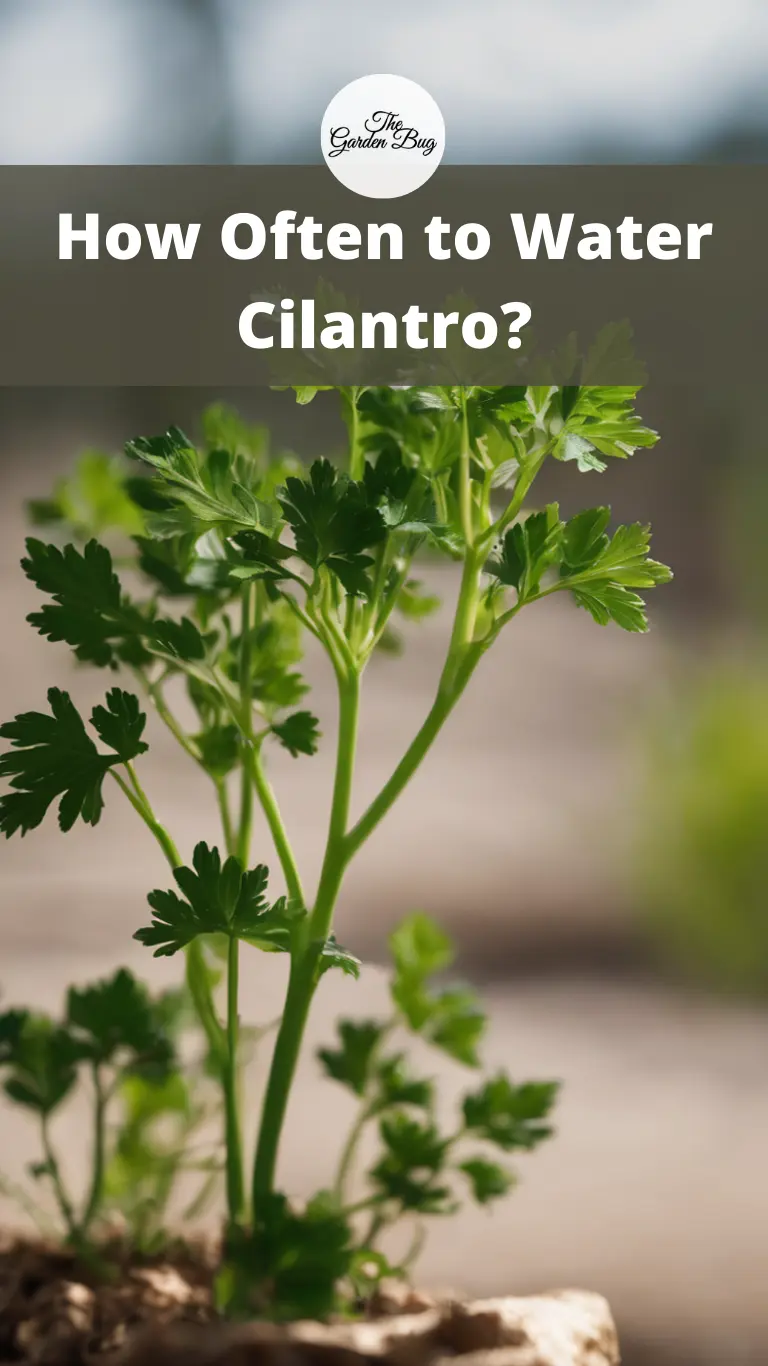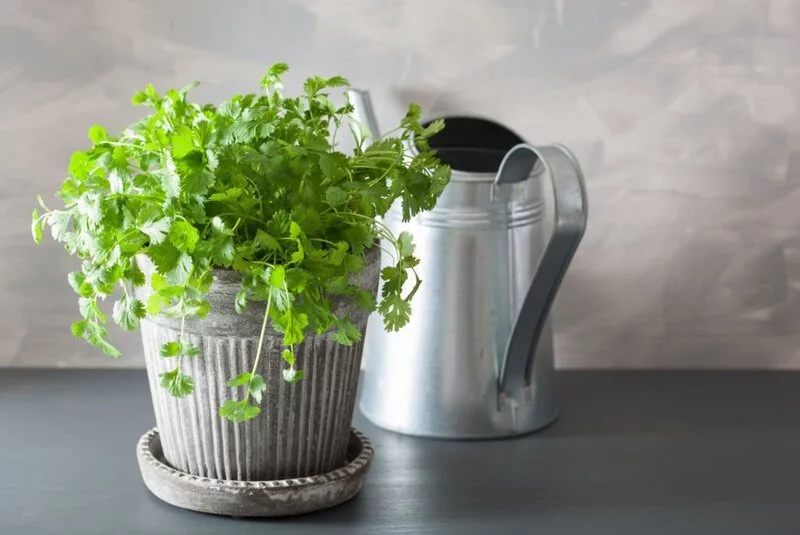Cilantro! The vibrant green herb with a unique, refreshing flavor that we all know and love. Often seen dancing on top of a delicious bowl of guacamole or giving a zesty zing to a stir-fry, cilantro is a star player in cuisines around the world. But, did you know that, just like us, cilantro also needs a proper drink to keep it fresh and sprightly? That’s right! How often and how much you water your cilantro plants can have a big impact on their growth and flavor.
So, whether you’re an experienced gardener or just starting your plant parenting journey, learning how to water your cilantro correctly can make all the difference. Buckle up, fellow gardeners, as we dive into the wonderfully watery world of cilantro!
Understanding Cilantro’s Water Needs
Cilantro, being an annual herb that grows fast, is kind of like a runner who needs to stay hydrated to keep up the pace. It prefers a steady supply of water but, like any plant, it doesn’t appreciate ‘wet feet’. That means it doesn’t like sitting in waterlogged soil. The goal here is to strike a balance – enough water to keep the soil moist, but not so much that it turns into a muddy swamp.
Factors that affect how much water cilantro needs include the weather, the size of the plant, and the type of soil it’s growing in. In hot weather, cilantro will need more water as the heat makes it lose moisture quickly. Bigger plants will also need more water compared to their smaller counterparts, as they have more foliage and thus lose more moisture through transpiration. As for the soil, well-draining soil that holds onto moisture without getting waterlogged is the best for growing cilantro.
How to Determine if Your Cilantro Needs Water
Sometimes cilantro talks to us in its own language. When it’s thirsty, it might drop a few hints. Learning to spot these signs can help you keep your cilantro happy and hydrated. Here are a few signs to look out for:
- Wilting: If your cilantro looks a bit limp and lifeless, it might be begging for a drink. Check the soil’s moisture level before watering, as wilting can also be a sign of overwatering.
- Yellow Leaves: If the leaves of your cilantro are turning yellow, it could be a sign of overwatering. It’s important to ensure the plant’s soil is moist but not waterlogged.
- Dry Soil: The most reliable way to check if your cilantro needs water is to feel the soil. If the top 1-2 inches of soil feel dry to the touch, it’s time to water your plant.
How Often to Water Cilantro: A Practical Guide
So, how often should you water your cilantro? Well, there’s no one-size-fits-all answer to this because, as we’ve learned, several factors can influence a plant’s water needs. However, here’s a general guide to help you keep your cilantro well-watered:
- Regularly but Not Excessively: As a rule of thumb, water your cilantro regularly to keep the soil consistently moist but not soggy. This usually means watering once every few days, depending on the weather, the size of your plant, and the type of soil.
- Adjust According to Weather: In hot, dry weather, you might need to water your cilantro every day or every other day. On the other hand, in cool, rainy weather, your cilantro might not need watering for several days at a time.
- Deep Watering: When watering, it’s better to water deeply to encourage the roots to grow downward, which helps the plant become more drought-tolerant. This means watering until you see water coming out of the bottom of the pot (for potted cilantro), or until the water has penetrated several inches deep into the soil (for garden-grown cilantro).
Remember, understanding your cilantro’s water needs and adjusting accordingly is a learning process. You’ll likely become better at it over time. Keep going, and your cilantro will thank you for it!
Overwatering and Underwatering: Problems and Solutions
A common challenge when caring for cilantro – or any plant, really – is finding that Goldilocks zone of watering: not too much, not too little, but just right.
Overwatering your cilantro can lead to yellowing leaves and even root rot – a condition that can kill your plant. On the other hand, underwatering can cause wilting and slow growth. But fret not, if you spot these signs early, you can quickly course-correct.
If you’ve been overwatering, let the soil dry out before watering again. And if you’ve been underwatering, give your plant a good drink and then adjust your watering schedule. Remember, the goal is moist, not soggy, soil.
Other Care Tips for Cilantro
Beyond watering, your cilantro will thank you for the following:
- Sunlight: Cilantro loves the sun! Give it a spot where it gets plenty of sunlight but also a bit of afternoon shade to protect it from harsh heat.
- Soil: Well-draining soil is your best bet. You can add some compost or organic matter to enrich the soil and improve its water retention.
- Space: Cilantro doesn’t like to be crowded. Ensure your plants have enough space to grow and spread out.
Conclusion
Congrats! You’re now well-versed in the art of watering cilantro. Remember, like any new skill, it takes a bit of practice. Don’t be too hard on yourself if you make mistakes. The important thing is to learn and adjust as you go.
With these tips and tricks, your cilantro will be thriving in no time, ready to add that fresh, zesty flavor to your culinary creations. So, roll up those sleeves, grab that watering can, and embark on your cilantro-growing journey.



